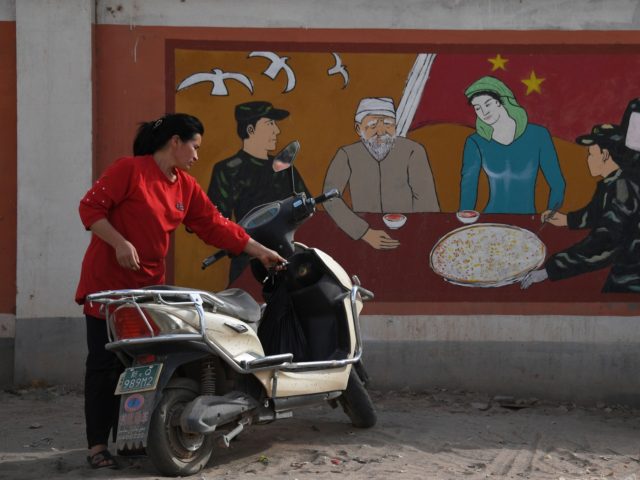A video recorded by a young male model inside a Uyghur detention facility in China’s northwestern Xinjiang region and published this week provides new insight into the country’s concentration camps for ethnic minorities.
Merdan Ghappar, a 31-year-old Uyghur and successful male model in China, was told by Chinese authorities in November 2019 that he needed to return to his native Xinjiang “to complete a routine registration procedure,” adding that he “may need to do a few days of education at his local community,” which is “a euphemism for the [concentration] camps,” the BBC reported.
In January 2020, police escorted Ghappar on a flight from Foshan, China, to his home city of Kucha in Xinjiang. Upon arrival, Ghappar says he was held in a local jail.
“I saw 50 to 60 people detained in a small room no bigger than 50 square meters, men on the right, women on the left,” Ghappar allegedly wrote in text messages to his family. According to his family’s account, published by the BBC on Tuesday, Ghappar managed to keep his cell phone while in detention and used it to document his experience in text messages and video footage sent to his relatives.
“Everyone was wearing a so-called ‘four-piece-suit,’ a black head sack, handcuffs, leg shackles, and an iron chain connecting the cuffs to the shackles,” he wrote.
After nearly three weeks in the crowded jail, Ghappar said Communist Party authorities moved him to a Chinese coronavirus quarantine facility after guards checked his temperature and determined that he was running a fever. It was in this “epidemic control center,” as Ghappar described it, that the male model recorded a series of short videos of himself.
UNVERIFIED
This #Uyghur man is apparently under quarantine for #coronavirus but he’s handcuffed to a bed. He managed to sneak in his phone which shows that security isn’t as tight as the #ConcentrationCamps.
I’ll update thread once more info comes to light.
Part 2 and source👇🏻 pic.twitter.com/0OKMgcJ5uW
— Arslan Hidayat.ئارسلان ھىدايەت (@arslan_hidayat) March 9, 2020
Part 3: He decides to record his surroundings.
Source: https://t.co/NdVtKWMBZJ pic.twitter.com/5CR3ik1gFz
— Arslan Hidayat.ئارسلان ھىدايەت (@arslan_hidayat) March 9, 2020
“Holding the camera with his right hand, he reveals his dirty clothes, his swollen ankles, and a set of handcuffs fixing his left wrist to the metal frame of the bed – the only piece of furniture in the room,” the BBC noted.
In the background of some of the videos, Chinese Communist Party (CCP) propaganda recordings are heard sounding from a loudspeaker.
“[E]xperts say that the video footage appears to be genuine, in particular because of the propaganda messages,” the BBC reported.
“Xinjiang has never been an ‘East Turkistan’,” claims one CCP slogan, broadcast in both Uyghur and Chinese. East Turkestan is the name the indigenous people of that territory use for it.
“Separatist forces at home and abroad have politicized this geographical term and called for those who speak Turkic languages and believe in Islam to unite,” another recording spouts.
In recent years, CCP authorities have forced over one million Uyghurs and other ethnic minorities in China’s northwestern Xinjiang region into concentration camps. China refers to the detention facilities as “re-education” camps and officially denies the existence of internment camps in Xinjiang.
In addition to the indoctrination that China brands “vocational training,” survivors of the camps say that prisoners are subject to extensive torture, forced sterilization and abortions, rape, and killings. Many say they were forced into slavery, manufacturing cheap goods for global sale.
The concentration camps serve a key purpose in the CCP’s efforts to suppress, and ultimately erase, the cultural identity of ethnic minorities in Xinjiang. The far west province is China’s largest, bordering central Asia. A Turkic-speaking people, Xinjiang’s Uyghurs are largely Muslim and culturally distinct from the ethnic Han Chinese majority currently ruling over the province.

COMMENTS
Please let us know if you're having issues with commenting.